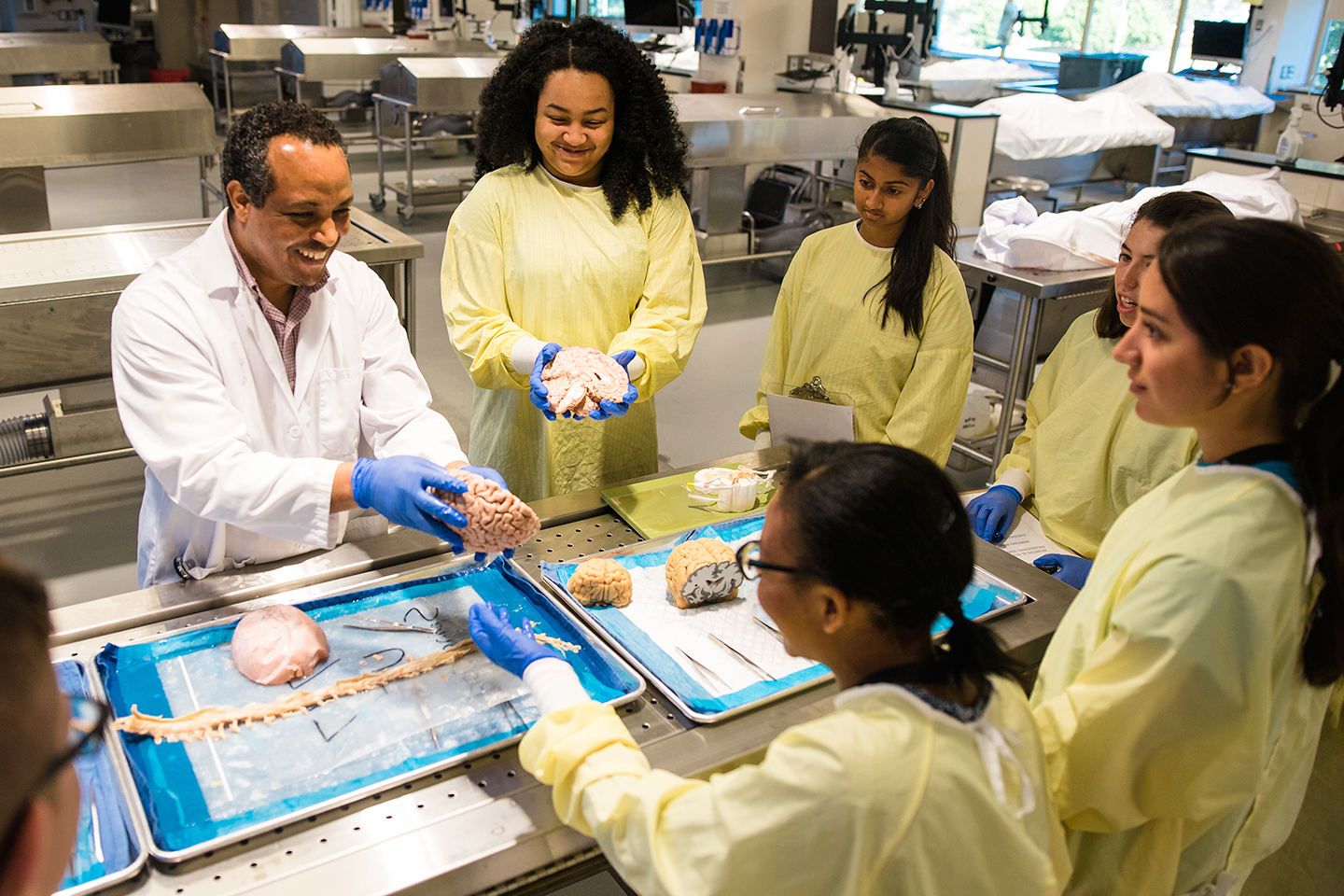
Oakland University William Beaumont School of Medicine (OUWB) introduced 30 local high school students to the medical field during its two-week Bioengineering and Biomedical Sciences Summer Program, where OUWB faculty members and staff brought the labs and classrooms to life for the students.
They prepared biology experiments and shared their passion for medicine with the teens. These hands-on activities engaged them while they absorbed lessons about the human body.
Lessons in the anatomy lab
After suiting up in yellow smocks, they entered the anatomy lab for lessons about the skeletal system and the body’s muscles as seen on uncovered cadavers. The instructors used an embalmed brain and spinal cord to explain how the brain functions.
“The students were very inquisitive and excited to be in the anatomy lab. I was impressed that at such a young age they were quite advanced. One of them mentioned being a vascular surgeon someday,” said Victoria Roach, OUWB assistant professor, Department of Biomedical Sciences, who led the discussion of the gastrointestinal system during the second anatomy lab visit.
The faculty set up a microbiology lab for a Rapid Strep Test. The students swabbed each other’s throats to retrieve cells then used microscopes to view real strep bacteria growing on petri dishes.
In the classrooms, they learned about the limbic system by combining essential oils to create their own aromatherapy spritzers and witnessed how germs spread from a handshake during the session called Spread of Infection.
A real-life preview of medicine and the health sciences
This year, the program included an afternoon at the OUWB Clinical Skills Center where students practiced with the otoscope to examine the ears and an ophthalmoscope to look at the retina. They also learned the components of a cardiac exam through a mannequin named Harvey. Harvey can simulate heart sounds and is the model that OUWB uses to teach its medical students.
“The students experienced what was like to be a health care provider as they performed ear and eye exams, and blood pressure measurements on each other as instructed by rising second-year OUWB medical students,” said Dawn Jung, M.D., assistant professor, Emergency Medicine, and assistant dean, Diversity and Inclusion.
Each day, they devoted time to a group research project on a medical topic. This year’s topics ranged from “Nano Technology in Medicine;” to “Water Contamination from Lead;” to “Emerging Diseases: Zika Virus.” This process gave them the opportunity to gather information using medical literature.
Formal presentations occurred on the last day of class where the groups demonstrated a command for their topics; a finale that clearly indicated that the participants not only gained an understanding of the medical field, but that fulfilling their interest in medicine is possible at OUWB. The faculty learned from the experience as well.
“Being involved in this program reminded that teaching, above all needs to be fun and engaging,” said Stefanie Attardi, Ph.D., assistant professor, Department of Biomedical Sciences. “It also left me wondering if I would someday see these high school students at OUWB.”

